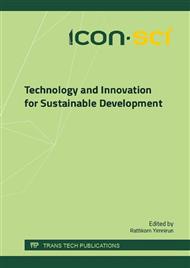p.107
p.111
p.115
p.119
p.123
p.127
p.131
p.135
p.141
Antimicrobial Properties of Transition Metals Substituted Chitosan against Cobetia Marina
Abstract:
This research work offers the new organic compound which has potential to replace the use of tributylin (TBT) in antifouling application. All modified chitosan powders were synthesized using in-house powder processing techniques. Pure and modified chitosan were evaluated for fouling properties via antimicrobial activity test against Cobetia Marina (C. Marina). The results indicated that copper substituted chitosan (CS-Cu) showed the highest inhibition zone and lowest number of C. Marina survival. It can be implied that CS-Cu showed the best antimicrobial ability against C. Marina.
Info:
Periodical:
Pages:
123-126
Citation:
Online since:
July 2016
Authors:
Keywords:
Price:
Сopyright:
© 2016 Trans Tech Publications Ltd. All Rights Reserved
Share:
Citation:


